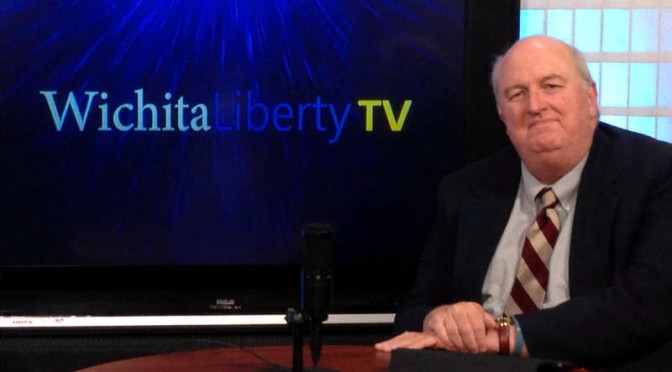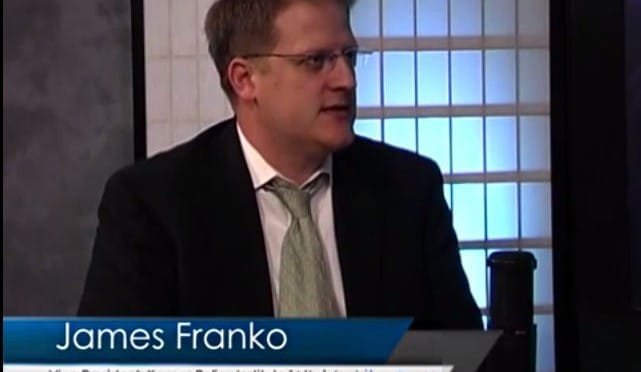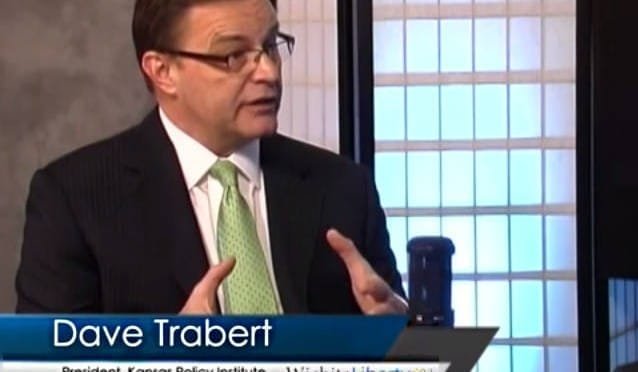Kansas state government needs to cut spending, but finds itself in a difficult situation of its own making.
The budget bill under consideration in the Kansas Legislature calls for spending $3 million for the production of an efficiency analysis review. It’s a good idea, but is too late to help the legislature balance the budget this year.
Trimming Kansas government spending is a long-term project. The legislature has looked at several bills that would help control spending, but has not passed the bills. Had they been passed when introduced, the state would be in a much better position to make reforms. But a look at the history of these bills leads us to wonder if the leaders of our state government — both in the executive and legislative branches — are really serious about controlling spending.
The three bills — explained in detail below — were in play during the 2011 and 2012 legislative sessions. They all passed the House of Representatives in 2011. But given that the Senate was in the hands of moderate Republicans, there was little chance that the bills would also pass the Senate. That’s what happened. Each bill died in the Senate.
Starting with the 2013 session, however, the Senate has been in conservative hands. Have the bills been reintroduced? With the exception of the efficiency analysis review mentioned above and a look at K — 12 education, I don’t believe the bills, or anything else like them, have been introduced or considered.
Both chambers of the Kansas Legislature and the governor’s mansion have been under the control of conservatives for three years, but no serious initiative to control spending has emerged, with the exception of the efficiency task force on K — 12 education. This ought to cause voters to ask if the desire and will to cut spending truly exists.
It’s curious that liberals and progressives in Kansas are opposed to efforts to increase efficiency, such as the school task force. If the government services that liberals support are truly vital, they ought to insist that they are delivered as efficiently as possible so that the greatest number may benefit to the greatest extent. But that doesn’t happen.
A simple path forward
Recently I attended a meeting where a speaker reported his observations of state workers wasting time while at work. He contrasted that to the private sector, where he said this waste is less likely to happen. Shouldn’t we investigate state agencies, looking for instances of waste, and when found, eliminate the waste, he asked? It’s a good idea, but something that I think would be difficult to accomplish.
There is an easier way to root out inefficiencies in the operations of state government — and local and federal too. That is to use the benefits of the private sector that the speaker praised. We can do this by outsourcing government functions to the private sector. Then, the work is done under the motivations that exist in the private sector.
Kansas Policy Institute produced a report in 2013 that shows how Kansas can save using the principles of privatization and outsourcing. The report is Better Service, Better Price: How privatization can streamline government, improve services, and reduce costs for Kansas taxpayers.
Reforms of this nature take some time to implement. Several years ago Kansas governmental leaders had time to start the state on a path to reform, but did not take the opportunity. Now these same leaders are considering raising taxes to balance the Kansas budget. This did not have to happen.
The bills that did not pass
In 2011 the Kansas Legislature lost three opportunities to do just this. Three bills, each with this goal, were passed by the House of Representatives, but each failed to pass through the Senate, or had its contents stripped and replaced with different legislation.
Each of these bills represents a lost opportunity for state government services to be streamlined, delivered more efficiently, or measured and managed. These goals, while always important, are now essential for the success of Kansas government and the state’s economy. There is no reason why these bills, or similar measures, could not be revived. The improvements these bills would foster will not balance next year’s budget. But they will set the stage for controlling the growth of Kansas government spending. This will leave more money in the private sector, which will help Kansas grow.
Kansas Streamlining Government Act
HB 2120, according to its supplemental note, “would establish the Kansas Streamlining Government Act, which would have the purpose of improving the performance, efficiency, and operations of state government by reviewing certain state agencies, programs, boards, and commissions.” Fee-funded agencies — examples include Kansas dental board and Kansas real estate commission — would be exempt from this bill.
In more detail, the text of the bill explains: “The purposes of the Kansas streamlining government act are to improve the performance, streamline the operations, improve the effectiveness and efficiency, and reduce the operating costs of the executive branch of state government by reviewing state programs, policies, processes, original positions, staffing levels, agencies, boards and commissions, identifying those that should be eliminated, combined, reorganized, downsized or otherwise altered, and recommending proposed executive reorganization orders, executive orders, legislation, rules and regulations, or other actions to accomplish such changes and achieve such results.”
In testimony in support of this legislation, Dave Trabert, President of Kansas Policy Institute offered testimony that echoed findings of the public choice school of economics and politics: “Some people may view a particular expenditure as unnecessary to the fulfillment of a program’s or an agency’s primary mission while others may see it as essential. Absent an independent review, we are expecting government employees to put their own self-interests aside and make completely unbiased decisions on how best to spend taxpayer funds. It’s not that government employees are intentionally wasteful; it’s that they are human beings and setting self-interests aside is challenge we all face.”
The bill passed the House of Representatives by a vote of 79 to 40. It was referred to the Senate Committee on Federal and State Affairs, where it did not advance.
Privatization and public-private partnerships
Another bill that did not advance was HB 2194, which in its original form would have created the Kansas Advisory Council on Privatization and Public-Private Partnerships.
According to the supplemental note for the bill, “The purpose of the Council would be to ensure that certain state agencies, including the Board of Regents and postsecondary educational institutions, would: 1) focus on the core mission and provide goods and services efficiently and effectively; 2) develop a process to analyze opportunities to improve efficiency, cost-effectiveness and provide quality services, operations, functions, and activities; and 3) evaluate for feasibility, cost-effectiveness, and efficiency opportunities that could be outsourced. Excluded from the state agencies covered by the bill would be any entity not receiving State General Fund or federal funds appropriation.”
This bill passed by a vote of 68 to 51 in the House of Representatives. It did not advance in the Senate, falling victim to a “gut-and-go” maneuver where its contents were replaced with legislation on an entirely different topic.
Opposing this bill was Kansas Organization of State Employees (KOSE), a union for executive branch state employees. It advised its “brothers and sisters” that the bill “… establishes a partisan commission of big-business interests to privatize state services putting a wolf in charge of the hen house. To be clear, this bill allows for future privatization of nearly all services provided by state workers. Make no mistake, this proposal is a privatization scheme that will begin the process of outsourcing our work to private contractors. Under a privatization scheme for any state agency or service, the employees involved will lose their rights under our MOA and will be forced to adhere to the whims of a private contractor who typically provides less pay and poor benefits. Most workers affected by privatization schemes are not guaranteed to keep their jobs once an agency or service is outsourced.”
Note the use of “outsourcing our work.” This underscores the sense of entitlement of many government workers: It is not work done for the benefit of Kansans; to them it is our work.
Then, there’s the warning that private industry pays less. Most of the time representatives of state workers like KOSE make the case that it is they who are underpaid, but here the argument is turned around when it supports the case they want to make. One thing is probably true: Benefits — at least pension plans — may be lower in the private sector. But we’re now painfully aware that state government has promised its workers more pension benefits than the state has been willing to fund.
Performance measures
Another bill that didn’t pass the entire legislature was HB 2158, which would have created performance measures for state agencies and reported that information to the public. The supplemental note says that the bill “as amended, would institute a new process for modifying current performance measures and establishing new standardized performance measures to be used by all state agencies in support of the annual budget requests. State agencies would be required to consult with representatives of the Director of the Budget and the Legislative Research Department to modify each agency’s current performance measures, to standardize such performance measures, and to utilize best practices in all state agencies.” Results of the performance measures would be posted on a public website.
This bill passed the House of Representatives by a nearly unanimous vote of 119 to 2. In the Senate, this bill was stripped of its content using the “gut-and-go” procedure and did not proceed intact to a vote.
Opposition to these bills from Democrats often included remarks on the irony of those who were recently elected on the promise of shrinking government now proposing to enlarge government through the creation of these commissions and councils. These bills, however, proposed to spend modest amounts increasing the manageability of government, not the actual range and scope of government itself. As it turns out, many in the legislature — this includes Senate Republicans who initiated or went along with the legislative maneuvers that killed these bills — are happy with the operations of state government remaining in the shadows.
These proposals to scale back the services that government provides — or to have existing services be delivered by the private sector — mean that there will be fewer government employees, and fewer members of government worker unions. This is another fertile area of gathering support for killing these bills.
State workers and their supporters also argue that fewer state workers mean fewer people paying state and other taxes. Forgotten by them is the fact that the taxes taken to pay these workers means less economic activity and fewer jobs in the private sector.
As to not wanting performance measures: Supporters of the status quo say that people outside of government don’t understand how to make the decisions that government workers make. In one sense, this may be true. In the private sector, profitability is the benchmark of success. Government has no comparable measure when it decides to, say, spend some $300 million to renovate the Kansas Capitol. But once it decides to do so, the benchmark and measurement of profitability in executing the service can be utilized by private sector operators. Of course, private contractors will be subject to the discipline of the profit and loss system, something missing from government.















